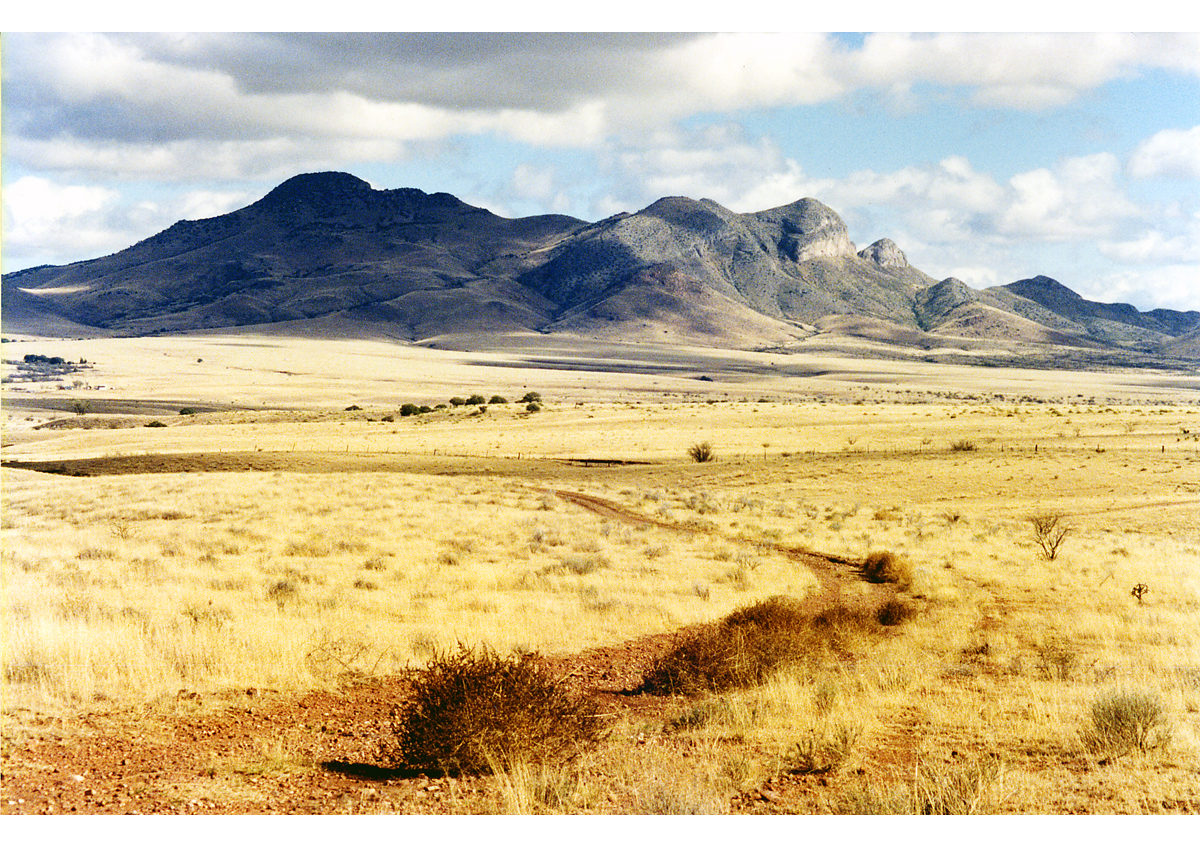 By David A. Schaller
By David A. Schaller
Santa Cruz County hugs the state’s southern border, helping form Arizona’s and the country’s frontier with the Republic of Mexico. It is Arizona’s smallest county, the length of the state away from its largest county, Coconino, to the north. Though small in area and with a population under 50,000, Santa Cruz has nonetheless assumed outsized importance in the state and national economy as a 21st-century gateway for international trade through Nogales, its port city and county seat.
The economy of Santa Cruz County depends on several sectors supporting the movement of goods and services from Mexico to the United States, the most prominent being the production, processing and transportation of agricultural commodities. Tourism, health and fitness, and selected manufacturing and technology sectors also offer employment opportunities for county residents. Beyond the border hub at Nogales lie the recreational getaways of Patagonia and Sonoita, the art colony of Tubac, and the burgeoning wine country around Elgin.
The Santa Cruz River, from which the county took its name, is an international asset in the region. It begins in southern Arizona, flows south into Mexico, then turns back north into the U.S. carrying mountain runoff as well as treated wastewater from the border towns of Nogales, Arizona, and Nogales, Sonora. Lately, the river faces the threat of drying out should prolonged drought continue, while rains that do arrive bring disruptive flooding to the border towns that hug hillsides and stream channels.
The county’s elevation helps buffer it from the desert extremes experienced in neighboring Pima County; yet as climate change intensifies, even this advantage will not keep aquifers and rivers from being depleted, watersheds diminished, and wildland fires from taking advantage of parched grasslands. As this article was being written, range fires spreading around Sonoita were leaving a path of evacuation and property loss as they fed on drought-dry grass and shrubs.
On the upside, the businesses along the Santa Cruz County-Sonora border have always required cooperation on everything from import/export protocols and produce inspections to water and sewage treatment. Trade and environmental agreements have introduced organizations like the International Boundary and Water Commission, the North American Development Bank, and the Border Environment Cooperation Commission, whose collaborative benefits have helped Santa Cruz County address many pressing issues involving water, wastewater, trade and climate.
Since 1992, a federal advisory group known as the Good Neighbor Environmental Board has worked to assist border counties like Santa Cruz by advocating for projects to improve the quality of life of persons residing on the U.S. side of the border. Its recent report, “Climate Change and Resilient Communities Along the U.S.-Mexico Border,” summarizes the effects that climate change is having in the U.S.-Mexico border region, identifies possible future impacts, and recommends a series of mitigation and adaptation steps for communities to consider in places like Santa Cruz County. The Board, representing a diverse group of private sector and government entities, understands that climate change problems that originate on both sides of the international border will demand solutions that also extend across that border.
As is the case elsewhere in Arizona, human intervention will be crucial for the people of Santa Cruz County to mitigate the effects of climate change and help create adaptive measures to dodge the worst-case scenarios. A long and patient history of cross-border and public-private cooperation promises the county an advantage as it faces the challenges ahead. The common ground established across areas as important as water and wastewater should give the county a greater capacity to reach consensus and better respond to the climate stressors stacking up along our southern border.
For Green Living’s climate change series, each month we will focus on one of Arizona’s 15 counties and how climate change is affecting it specifically. Next month’s installment will focus on Yavapai County.
David A. Schaller is a retired environmental scientist living in Tucson where he writes on climate, water and energy security.
Read more environment articles at greenlivingaz.com/environment.






